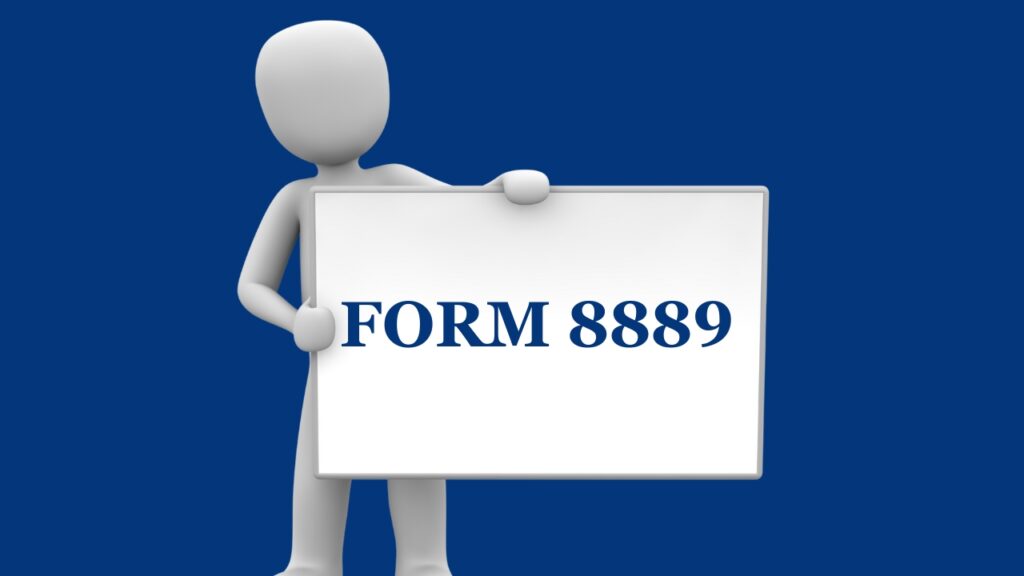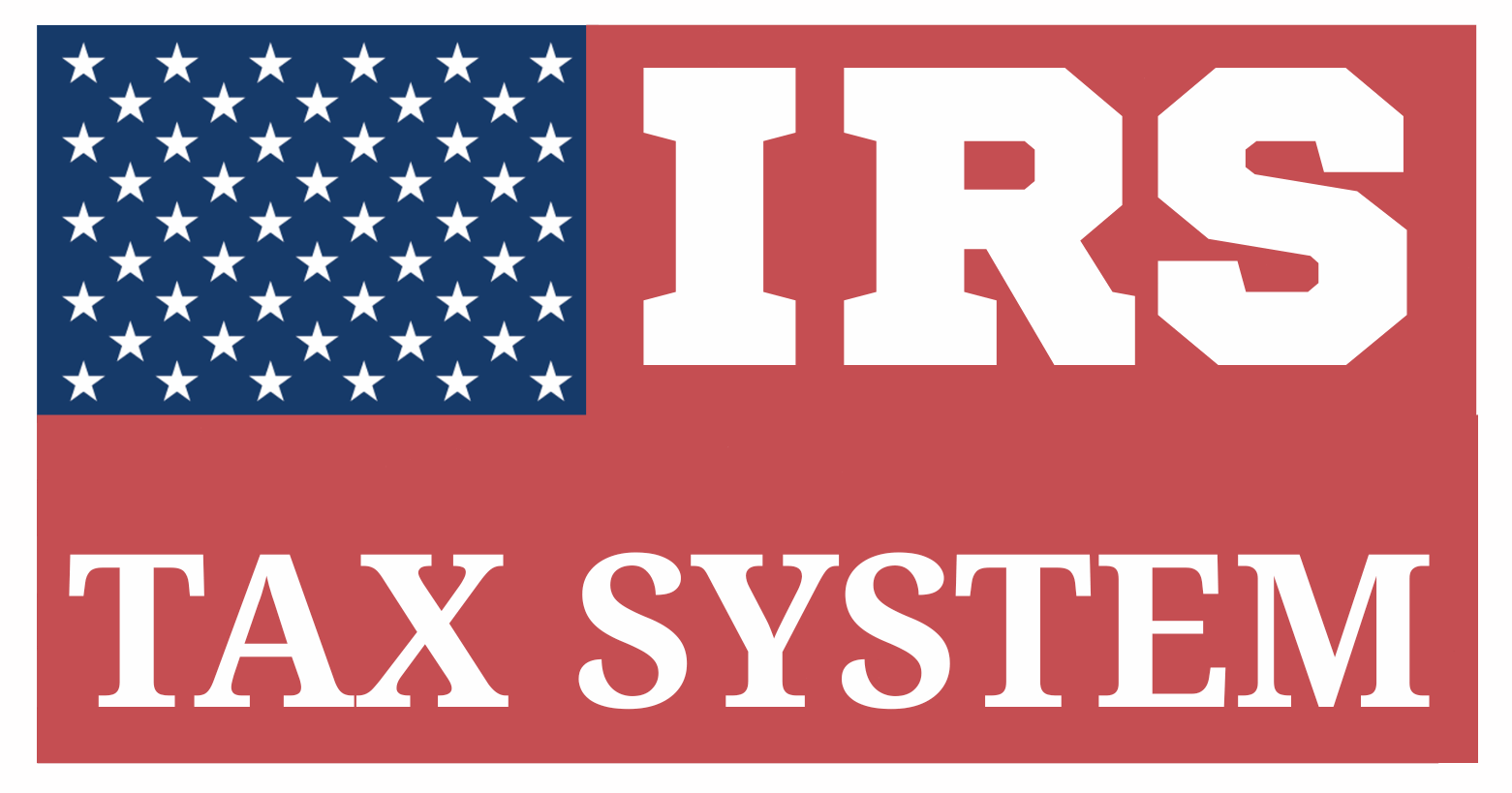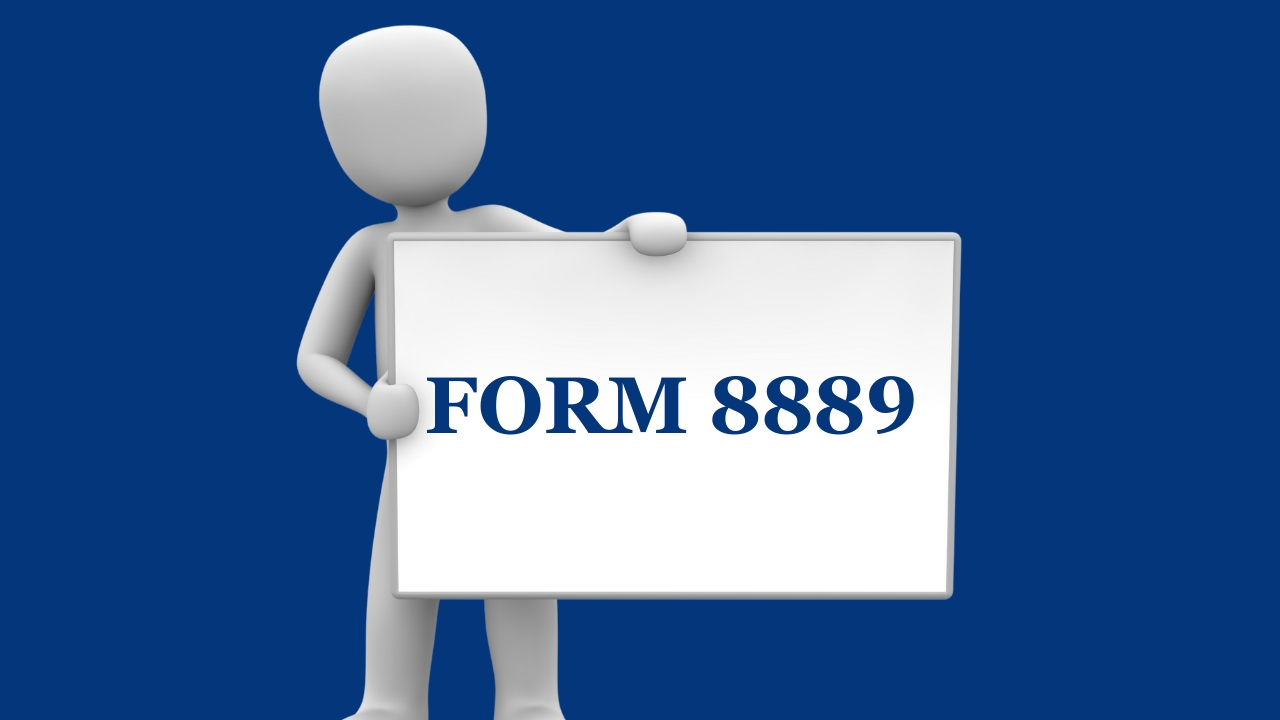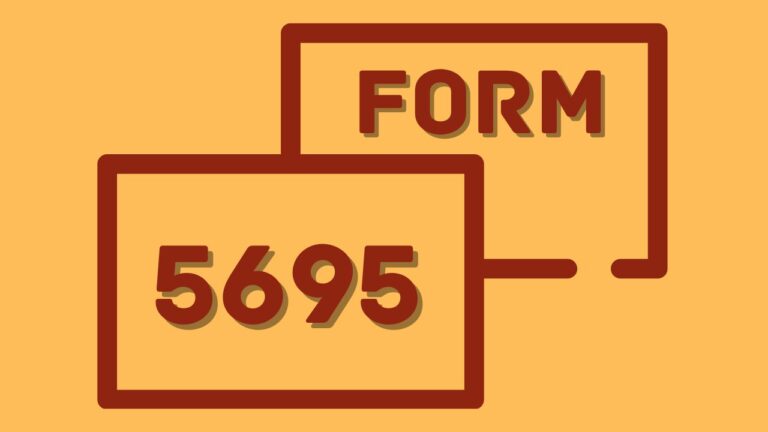Form 8889: Simplified Guide for Health Savings Accounts (HSAs)
Table of Contents
A Detailed Summary On Form 8889

Form 8889 allows individuals to report HSA contributions and withdrawals, and to calculate any tax consequences related to their account for the year. HSAs are tax-advantaged accounts designed to help individuals save for qualified medical expenses if they are enrolled in a High Deductible Health Plan (HDHP).
This form enables the IRS to:
- Verify that contribution limits are not exceeded.
- Ensure distributions are used for qualified expenses.
- Enforce penalties if the funds are misused.
This guide will walk you through everything you need to know—from eligibility to filing requirements, contribution limits, distribution rules, penalties, and excess contribution handling.
What Is IRS Form 8889 Used For?
IRS Form 8889 is used to report all tax-related activities associated with a Health Savings Account (HSA). If you have an HSA—whether you contributed to it, received contributions from your employer, or took money out of it—you are required to file this form with your federal income tax return. The form is attached to Form 1040, 1040-SR, or 1040-NR and is essential for accurately reporting HSA-related tax benefits and obligations.
Here’s a breakdown of the key purposes Form 8889 serves:
1. Report HSA Contributions
Form 8889 helps you report:
- Contributions made by you, your employer, or any third party on your behalf.
- Includes rollover contributions or transfers from another HSA or an Archer Medical Savings Account (MSA).
- Contributions made through a cafeteria plan (pre-tax payroll deductions).
This allows the IRS to verify that your total contributions are within the annual contribution limit, which varies based on whether you have self-only or family HDHP coverage, and whether you’re eligible for the $1,000 catch-up contribution (age 55+).
2. Calculate Your HSA Deduction
Even if you or someone else contributed to your HSA, you can claim a tax deduction for those amounts—unless they were made pre-tax through an employer plan. The form helps determine how much of your contribution is deductible, and where to report that amount on your main tax return (typically on Schedule 1, Part II).
3. Report Distributions From Your HSA
Anytime you withdraw funds from your HSA, it’s considered a distribution. Form 8889 requires you to:
- Report the total amount withdrawn from your HSA.
- Indicate how much of that distribution was used for qualified medical expenses, which are tax-free.
- Determine if any part of the withdrawal was used for non-qualified purposes (such as personal use), which is taxable and subject to a 20% penalty unless an exception applies (e.g., age 65+, disability, or death).
4. Calculate Taxes and Penalties
If you use HSA funds for non-medical purposes or exceed the IRS annual contribution limit, Form 8889 is used to:
- Calculate the income tax on those funds.
- Compute the 20% additional tax on non-qualified withdrawals.
- Calculate the 6% excise tax on any excess HSA contributions that remain in the account past the tax filing deadline.
5. Handle Excess Contributions
If you accidentally contribute more than allowed to your HSA, Form 8889 helps you:
- Report the excess amount carried forward from previous years.
- Report any portion of the excess that was withdrawn by the tax filing deadline.
- Calculate the penalty on any remaining excess using Part III of the form.
Who Should File IRS Form 8889?
IRS Form 8889 must be filed by any taxpayer who had any financial activity involving a Health Savings Account (HSA) during the tax year. This form is not optional—it’s a mandatory attachment to your Form 1040, 1040-SR, or 1040-NR if you meet even one of the conditions below.
Filing this form allows the IRS to properly track your HSA contributions, deductions, distributions, and any penalties or taxes owed for improper HSA usage or excess funding.
Here’s a comprehensive breakdown of who is required to file Form 8889:
1. You Made Contributions to an HSA
If you personally contributed money to a Health Savings Account, either directly or through a third party (like a family member or friend), you must file Form 8889 to:
- Report those contributions,
- Claim a tax deduction (if eligible), and
- Ensure your total contributions do not exceed the IRS annual limits.
Even if the contributions were made after the end of the year but before the tax filing deadline (e.g., January–April), you are still required to report them if they are applied to the prior tax year.
2. Your Employer Contributed to Your HSA
If your employer made pre-tax contributions to your HSA—usually shown in Box 12 (Code W) on your Form W-2—you are required to report those contributions on Form 8889, even though they are not included in your gross income.
Note: Employer contributions do count toward the IRS’s total HSA limit, so they must be factored in when calculating your maximum contribution allowance.
3. You Took Distributions From Your HSA
Any time you withdrew money from your HSA—whether to pay for:
- Qualified medical expenses,
- Dental or vision care,
- Over-the-counter medication, or
- Any non-medical use (e.g., paying bills or personal expenses),
you must file Form 8889 to report:
- The total amount distributed,
- Indicate whether the distribution was used for qualified medical expenses.
- If applicable, additional taxes or penalties.
Using HSA funds for non-qualified purposes may result in a 20% penalty and income tax unless you are age 65 or older, disabled, or deceased.
4. You Had Excess Contributions
If you contributed more than the annual IRS limit to your HSA, even accidentally, you are required to file Form 8889 to:
- Report the excess amount,
- Determine if you withdrew it in time,
- And, if not, calculate the 6% excise tax owed on the overage (reported on Schedule 2).
5. You Inherited an HSA
If you are the beneficiary of an HSA due to the death of the account holder, you may need to file Form 8889 depending on how the funds were distributed to you. The form helps determine:
- If the inherited funds were used for medical expenses,
- Or if they are taxable income to you.
6. You Made Rollovers or Transfers
Even though qualified rollovers between HSAs or from an Archer MSA to an HSA are not taxable, they must still be reported on Form 8889 to confirm that the funds were properly handled within the 60-day rollover window.
Summary: You MUST File Form 8889 If
| You should file if… | Why it’s required |
| You contributed to an HSA | To claim your deduction and ensure IRS limit compliance |
| Your employer contributed to your HSA | To report total contributions, even if non-taxable |
| You took HSA withdrawals | To show use for qualified expenses (or pay penalties) |
| You exceeded your contribution limit | To report excess and calculate excise taxes |
| You inherited an HSA | To report taxable value and distributions |
| You completed a rollover/transfer | To verify non-taxable treatment |
Failing to file Form 8889 when required can lead to audits, tax penalties, or loss of HSA-related deductions and exclusions. Always review your W-2, HSA account statements, and contribution records to determine your filing obligation.
Form 8889 Instructions (2025)
Form 8889, officially named ‘Health Savings Accounts (HSAs),’ is used to report HSA contributions, withdrawals, and to calculate any related tax effects.. This form is a critical part of your federal income tax filing if you interacted with an HSA in any way during the tax year. It is attached to Form 1040, 1040-SR, or 1040-NR and consists of three main parts, each with a unique reporting purpose and set of calculations.
Part I: Reporting HSA Contributions and Calculating Deductions (Lines 1–13)
Purpose
This section tracks how much was contributed to your HSA, who made the contributions (you, employer, or others), and calculates your eligible deduction.
Line-by-Line Description
- Line 1: Declare your health coverage type — either self-only or family. This determines your annual HSA contribution limit.
- Line 2: Enter the total contributions you made, including any amounts made between January 1, 2026, and April 15, 2026, that apply to the 2025 tax year.
- Line 3: Report contributions made by others on your behalf, such as a family member (excluding employer).
- Line 4–5: Calculate your contribution limit based on IRS thresholds for the year. In 2025:
- Self-only coverage: $4,150
- Family coverage: $8,300
- Additional catch-up (age 55+): $1,000
- Line 6: If you were not eligible for the entire year, prorate your limit based on months of eligibility.
- Line 7: Enter the total employer contributions to your HSA, shown in Box 12 of your Form W-2 with code ‘W”
- Line 8: Include any qualified rollovers from another HSA or Archer MSA.
- Line 9–10: Add up all contributions and check against limits. If excess contributions exist, the form will guide you to identify and resolve them.
- Line 11–13: Finalize your allowed deduction, which gets transferred to Schedule 1 (Form 1040), Line 13.
Outcome of Part I
You determine how much of your contributions are tax-deductible, and whether you’ve exceeded the IRS contribution limit, potentially triggering penalties in Part III.
Part II: Reporting HSA Distributions and Determining Taxability (Lines 14–18)
Purpose
This section reports all money withdrawn from your HSA (distributions) and determines whether those funds were used for qualified medical expenses or not.
Line-by-Line Description
- Line 14a: Report the total distributions you received from your HSA in 2025 (you’ll get this on Form 1099-SA, provided by your HSA administrator).
- Line 14b–14c: Identify amounts that were rolled over or transferred to another HSA — these are not taxable and are excluded from the distribution total.
- Line 15: Enter the portion of your withdrawals that were used for qualified medical expenses under IRS rules (Publication 502 gives the full list).
- Line 16: Subtract Line 15 from 14c to find how much of your distribution was used for non-qualified expenses.
- Line 17a–17b: If you used HSA funds for anything other than qualified expenses, calculate the 20% additional tax on those amounts—unless you meet an exception (such as being age 65, disabled, or deceased).
- Line 18: This is the taxable income from your HSA distributions, which must be included on your Form 1040, Schedule 1, Line 8f.
Outcome of Part II
You determine whether your HSA distributions were tax-free or subject to ordinary income tax and a 20% penalty due to misuse.
Part III: Excess Contributions and Excise Tax (Lines 19–21)
Purpose
This final section applies only to taxpayers who exceeded the annual HSA contribution limit and did not correct it by withdrawing the excess before the tax deadline (April 15, 2026, for 2025).
Line-by-Line Description
- Line 19: Input any excess HSA contributions from previous years that were never corrected and are still in the account.
- Line 20: If you withdrew the excess by the IRS deadline (with any earnings), note the amount here to reduce your penalty.
- Line 21: Line 21: Excess HSA contributions not withdrawn by the deadline are subject to a 6% excise tax .
- Reporting Excise Tax: This tax does not appear on Form 8889 itself. Instead, you report it on Form 5329, Line 47, and then include the total on Schedule 2 (Form 1040), Line 17h.
Outcome of Part III
You assess whether you owe a recurring 6% penalty on uncorrected excess contributions and take steps to report it elsewhere in your return.
Visual Summary of IRS Form 8889 Structure
| Section | Purpose | Key Tax Functions | Forms Used Together |
| Part I | Tracks contributions and calculates deductions | Enforces IRS contribution limits and deduction amounts | Form 1040, W-2, Form 5498-SA |
| Part II | Reports distributions and their use | Flags taxable/non-qualified withdrawals and applies 20% penalty | Form 1099-SA |
| Part III | Identifies excess contributions and calculates excise tax | Applies 6% annual penalty for overfunding | Form 5329, Schedule 2 (Form 1040) |
Expert Tips for Completing Form 8889:
- Be sure to review Form 8889 alongside Forms 1099-SA and 5498-SA to ensure accurate reporting.
- Keep medical receipts even though you don’t submit them—IRS may request them in case of an audit.
- If you made a late contribution, verify whether it qualifies for the prior tax year or counts as excess.
- Over 55? You may add $1,000 to your contribution limit through a catch-up provision.
IRS Form 8889 (2025): Detailed Example With Full Walkthrough
Taxpayer Profile
- Name: Priya Mehta
- Filing Status: Married Filing Jointly
- Age: 57 (eligible for catch-up contribution)
- Spouse’s Age: 55
- HDHP Coverage Type: Family coverage (both covered all 12 months)
- Priya’s HSA Account Only: Spouse has no separate HSA
- Total Contributions Made by Priya: $8,000
- Employer Contributions (Box 12, W-2, Code W): $1,200
- Distributions Received from HSA: $6,000 (per Form 1099-SA)
- Qualified Medical Expenses Paid with HSA: $5,000
- No rollovers, no prior-year excess, no distributions from MSAs
- Excess not withdrawn by April 15, 2026
Part I – HSA Contributions and Deduction
Objective: Determine how much of Priya’s contributions are deductible and whether any excess exists.
Key Points for 2025
- IRS limit for family coverage: $8,300
- Catch-up contribution allowed for Priya (age 55+): $1,000
- Spouse catch-up only allowed if spouse owns separate HSA (not applicable)
Calculation Walkthrough
- Line 1: Family coverage
- Line 2: Priya contributed $8,000 herself
- Line 3: Contributions by others: $0
- Line 4: $8,000 total
- Line 5: Annual limit = $8,300 (base) + $1,000 (catch-up for Priya only) = $9,300
- Line 6: $9,300 (full-year eligibility)
- Line 7: Employer contributions: $1,200
- Line 8: Rollovers: $0
- Line 9: $1,200
- Line 10: $9,300 − $1,200 = $8,100
- Line 11: Lesser of Line 4 or 10 = $8,000
- Line 12: Prior excess = $0
- Line 13: You may deduct $8,000 on Schedule 1, Line 13 of your Form 1040.
Result: Priya can claim an $8,000 deduction. No excess contributions in this case.
Part II – HSA Distributions and Taxable Income
Objective: Report how HSA funds were used and whether any distributions are taxable.
Form Details
- Line 14a: Total distributions = $6,000 (from 1099-SA)
- Line 14b: Rollover amount = $0
- Line 14c: $6,000
- Line 15: Qualified medical expenses paid = $5,000
- Line 16: $6,000 − $5,000 = $1,000 (used for non-qualified expenses)
- Line 17a: Priya is under 65 → 20% penalty applies
- Line 17b: 20% of $1,000 = $200 penalty
- Line 18: $1,000 taxable income to be reported on Schedule 1, Line 8f
Result: $1,000 of HSA funds used improperly is taxable, and a $200 penalty applies.
Part III – Excess Contributions and Excise Tax
Objective: Report any excess contributions from this or past years and calculate 6% excise tax if not withdrawn.
- Priya had no excess this year or prior, so she skips this section entirely.
Result: No excise tax due. Nothing to report on Form 5329.
Summary of Priya’s Tax Outcomes From Form 8889
| Tax Item | Amount |
| Deductible HSA Contribution | $8,000 |
| Taxable Distributions | $1,000 |
| 20% Penalty on Non-Qualified Usage | $200 |
| 6% Excise Tax on Excess | $0 |
What Priya Learns From Filing Form 8889
- Even if contributions are fully deductible, using HSA money for anything other than medical expenses leads to penalties and taxable income.
- Only the HSA owner is eligible for the $1,000 catch-up contribution. A spouse must have their own HSA to claim it separately.
- Accurate tracking of medical expenses is critical for substantiating withdrawals.
Reporting Form 8889 on Your Tax Return – A Complete Guide
IRS Form 8889 is not a standalone form — it directly integrates into your individual income tax return, specifically Form 1040. The form is essential for reporting Health Savings Account (HSA) contributions, distributions, deductions, and penalties. Filing Form 8889 correctly helps report your HSA activity accurately and reduces the risk of IRS penalties or additional taxes
Where Form 8889 Data Flows on Form 1040
Here’s how and where specific entries from Form 8889 are reported on your federal tax return:
1. Schedule 1 (Form 1040), Line 13 – Report your HSA deduction here.
- This is the most common link from Form 8889.
- Once you complete Line 13 of Form 8889, enter the deductible HSA contribution on Schedule 1, Line 13 of Form 1040.
- This deduction lowers your adjusted gross income (AGI), regardless of whether you itemize..
Example
If you contributed $3,500 to your HSA and were eligible to deduct the full amount, this $3,500 appears on Schedule 1, Line 13.
2. Schedule 1 (Form 1040), Line 8f – Other Income (Taxable HSA Distributions)
- If you used HSA funds for non-qualified expenses, that portion becomes taxable income.
- This value comes from Line 18 of Form 8889 and is added to your total income on Form 1040.
Example
You withdrew $1,000 from your HSA for non-medical purposes. This amount must be reported as other income on Line 8f of Schedule 1.
3. Schedule 2 (Form 1040), Line 17h – Additional Tax (20% Penalty)
- Any penalty for non-qualified distributions (calculated on Line 17b of Form 8889) is reported here.
- This amount increases your total tax liability unless you’re exempt due to age (65 or older), disability, or death.
Example
You took $2,000 for a non-qualified purpose before age 65. The 20% penalty is $400 and must be reported on Line 17h of Schedule 2.
Filing and Attachment Requirements
- Form 8889 must be attached to your Form 1040 or 1040-SR when you file your federal return.
- If you file electronically, tax software will automatically include the form.
- If filing by mail, include Form 8889 and Schedule 1 behind your Form 1040 in the correct order.
Conclusion
Filing IRS Form 8889 correctly ensures you maximize your HSA tax benefits while staying in full compliance with IRS rules. Whether you’re making contributions, withdrawing for medical costs, or adjusting for excess contributions, this form is a vital part of your personal tax return if you participate in an HSA. Always verify limits, track all contributions and distributions carefully, and consult a tax professional if your HSA activity includes rollovers, employer contributions, or excess amounts.
Frequently Asked Questions (FAQs)
Can I claim the deduction if someone else made contributions to my HSA?
Yes, contributions made on your behalf (excluding employer amounts) are deductible by you.
Are employer HSA contributions taxable?
No. They are not included in your income, but must still be reported on Form 8889, Line 3.
What if I spend HSA funds on non-qualified expenses?
You must pay income tax plus a 20% penalty on the distribution unless you’re 65 or older, disabled, or deceased.
Can I contribute to an HSA if I’m enrolled in Medicare?
No. After enrolling in any part of Medicare, you can’t make new HSA contributions—but you may continue using the funds already in your account.
Do I need to submit receipts for my HSA expenses?
Not to the IRS—but you must keep them in case you’re audited.







